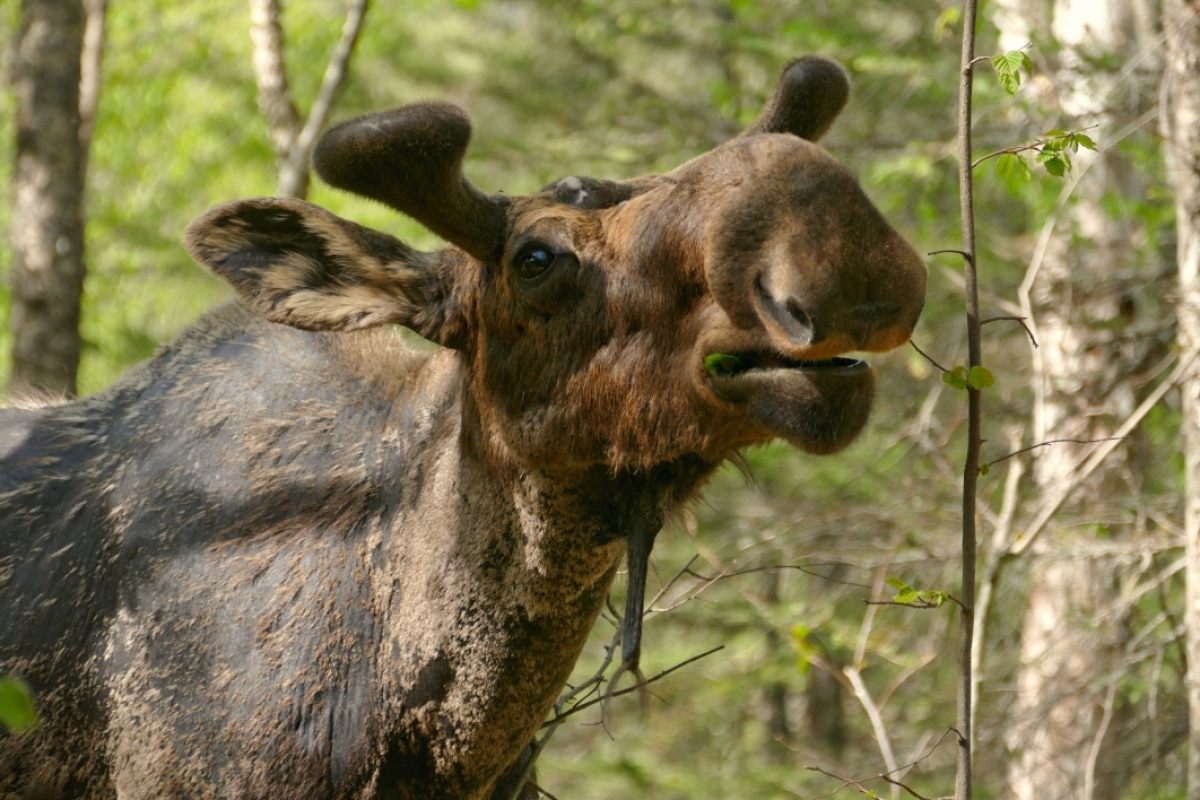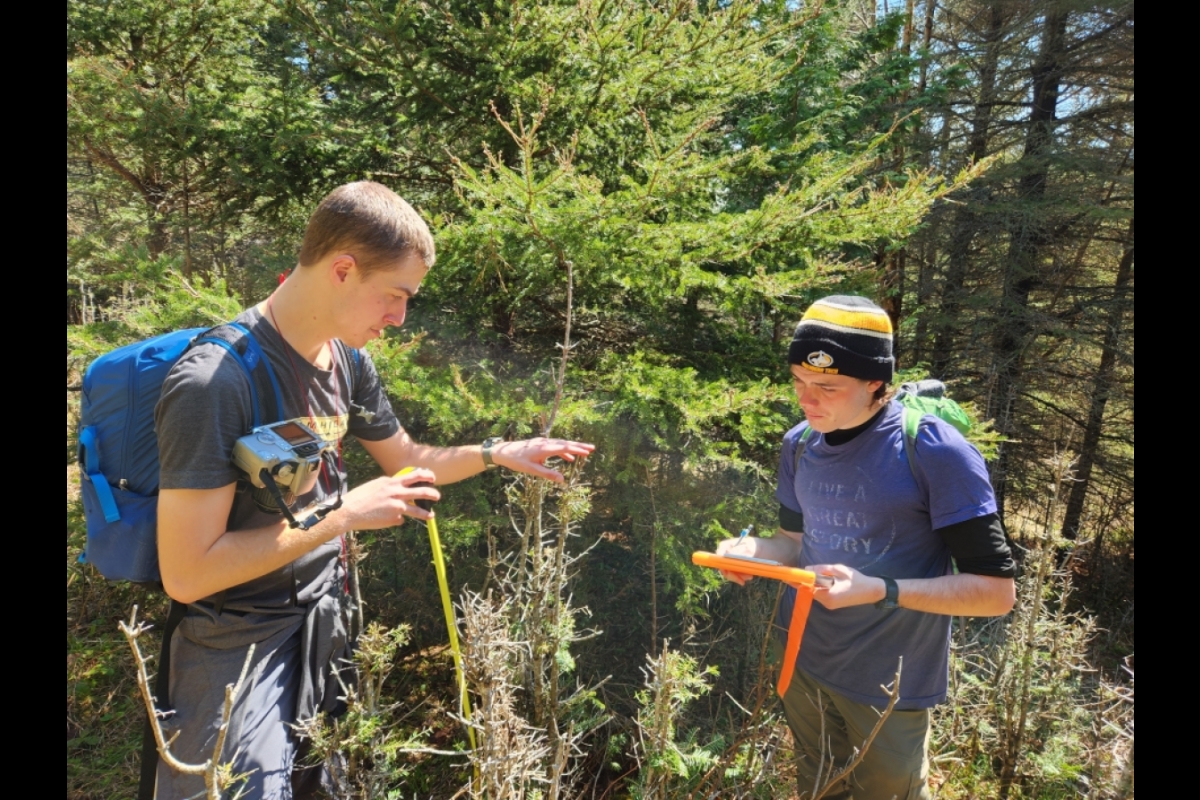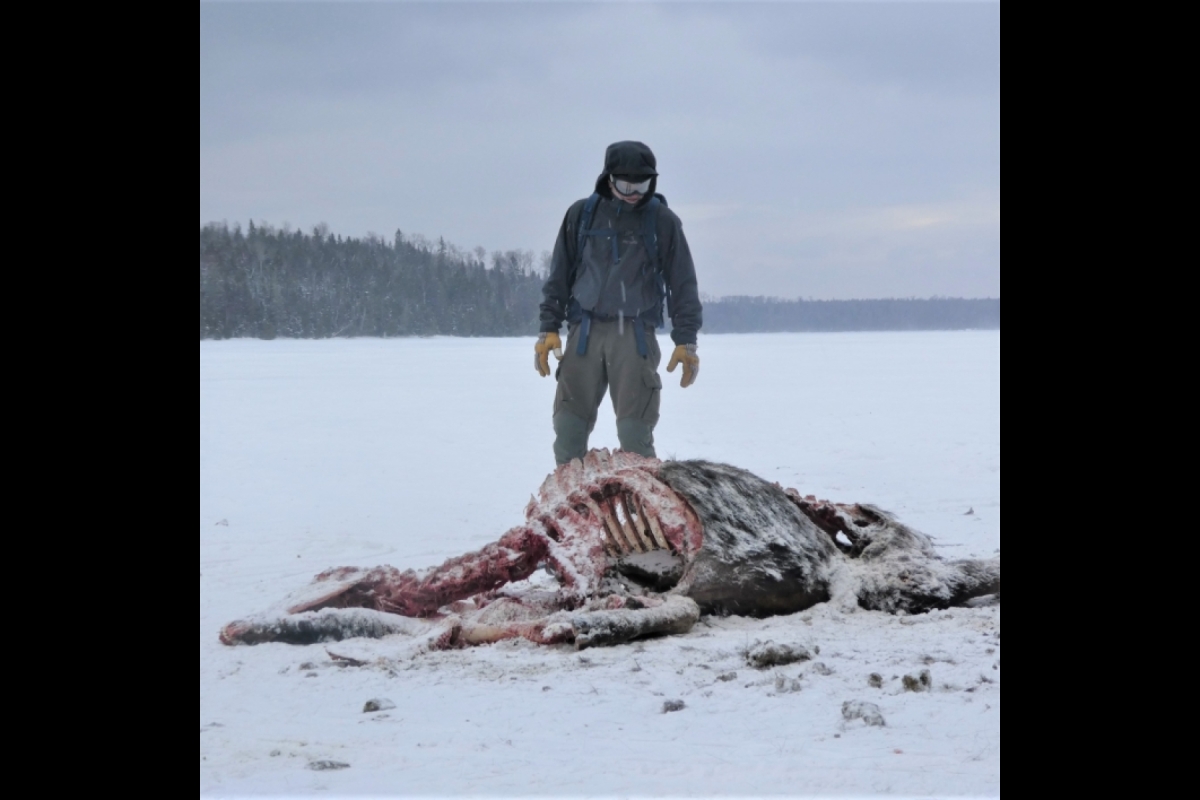The surprising role of gray wolves in ecosystem dynamics
Recent study reveals how changes in the genetics of a keystone predator can ripple through an entire ecosystem

The arrival of M93 (the large, lighter-colored wolf at front center) rescued the population, allowing for genomic diversity, improving overall fitness and increasing wolf numbers. Photo courtesy John Vucetich
Keystone species are integral to maintaining the balance and health of ecosystems. As top predators, gray wolves profoundly impact their environment by controlling herbivore populations and affecting vegetation growth and diversity.
One well-known example of this is the reintroduction of gray wolves to Yellowstone National Park in 1995, which had a ripple effect throughout the entire ecosystem.
A recent study co-authored by Arizona State University School of Life Sciences Emeritus Professor Philip Hedrick and Michigan Technological University Assistant Professor Sarah Hoy unveils the intricate relationship between genetic processes in gray wolves and the extensive effects on the ecosystem dynamics of Isle Royale National Park, located on a remote island cluster in Lake Superior.
The study, titled “The far-reaching effects of genetic process in a keystone predator species, grey wolves,” was recently published in the journal Science Advances. In it, the researchers focused on understanding how genetic changes within the gray wolf population could affect their ecosystem.
“While the case of these island wolves may seem unique, it is concerning because many top predator populations around the world are becoming increasingly small, fragmented and isolated to the point that inbreeding has become a major concern due to factors such as habitat loss,” the paper states.
Several years ago, the population of gray wolves at Isle Royale National Park underwent an unfortunate decline due to inbreeding. Hedrick, Hoy and their team embarked on a two-decade-long investigation of the park's wolves, and found that the arrival of a single wolf, M93, rescued the population by allowing for genomic diversity, improving overall fitness and increasing wolf numbers.
As genes changed and wolves thrived, predation rates on moose peaked. Moose are their primary prey and the dominant mammalian herbivore on the island. However, as inbreeding levels increased again, predation rates dramatically declined.
The fluctuations in predation rate over the years influenced the abundance of moose, which in turn impacted the consumption rates of balsam fir, a crucial winter forage for moose and a key boreal forest species.
For Sarah Hoy, the most surprising result of the study is “how the genetics of a single individual predator can have impacts that flow through an entire predator population, through the prey population, and on to the forest and its ecological processes.”
The study suggests that genetic changes within the gray wolf population played a pivotal role in shaping these fluctuations and, consequently, in the dynamics of the entire forest ecosystem.
This research emphasizes the interconnectedness of species in ecosystems and how one species’ well-being can affect others. It underscores the necessity of holistic conservation strategies that consider genetic diversity to ensure the robustness and health of intricate ecosystems.
More Science and technology

Associate professor shares her journey from NASA to ASU
From leading space missions to designing and building spaceflight hardware and training students in space science and engineering…

Famed systems engineer inspires ASU to tackle global problems
“Providing great talent with great opportunity can make a great difference.” Such was a key part of the message delivered by G.…

The science behind chronic stress
Stress comes in many shapes and sizes. There’s the everyday stress of preparing for a final exam or being stuck in traffic. And…


